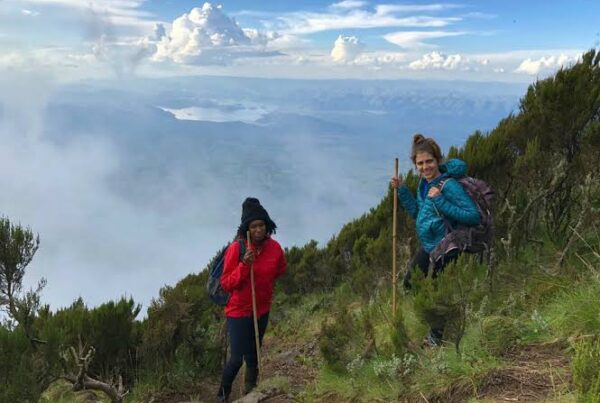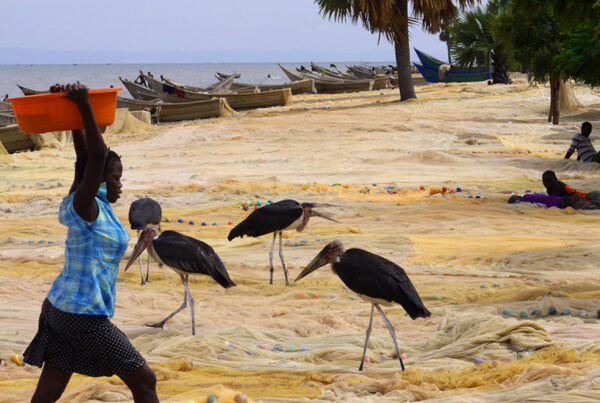5 Fascinating Facts About the Leopard (Panthera Pardus)
Facts About the Leopard
The Enigmatic Shadow of the Savannah
In the golden hush of an African dusk, a figure melts into the tall grass with near supernatural stealth. Neither the thunderous lion nor the lightning-fast cheetah can match the sheer mystery and elegant danger exuded by the leopard (Panthera pardus). Revered as one of Africa’s most elusive predators, the leopard stands out not just for its mesmerizing rosette-patterned coat, but for a range of adaptations and behaviors that make it one of the most fascinating big cats on Earth. From dense rainforests and rugged mountains to arid savannahs and urban peripheries, the leopard’s incredible adaptability makes it a top predator across an extraordinary range of habitats.
To see a leopard in the wild is to witness the African wilderness at its most refined. These cats are as much poets of the predator world as they are silent executioners. Let us step into the life of the leopard and uncover five remarkable facets that make this spotted phantom one of Africa’s most awe-inspiring animals.
Master of Stealth and Adaptability
No predator matches the leopard in its ability to adapt to almost any environment. From the rain-drenched forests of Uganda to the rocky outcrops of South Africa’s Kruger National Park, leopards thrive where other big cats struggle. This success is largely due to their ability to stay hidden and hunt with a silence that borders on the supernatural. Leopards are ambush predators, using dense cover to approach their prey before delivering a swift and fatal pounce. Their entire hunting method revolves around stealth and patience rather than speed or strength alone.
A leopard’s adaptability also extends to its dietary flexibility. Unlike cheetahs or lions, leopards consume a wide variety of prey, from small rodents and birds to medium-sized antelope. They have even been recorded feeding on reptiles and fish when other food is scarce. This dietary diversity makes them incredibly resilient to ecological changes and capable of coexisting with human settlements, albeit often at the cost of conflict. The silent nature of their movement and their predominantly nocturnal behavior make them a rare sight, even in areas with a high population density.
Solitary Elegance and Territorial Precision
Leopards are among the most solitary of all big cats, with each adult maintaining a clearly defined territory that it defends with remarkable dedication. Males typically control larger ranges that may overlap with the territories of several females, but interactions are minimal and generally limited to mating periods. This solitary nature is not born of aggression, but necessity. It allows each leopard to avoid competition for food and maintain access to sufficient hunting grounds.
Territorial boundaries are meticulously marked with scent, claw marks on trees, and strategic fecal deposits. These invisible lines are strictly adhered to, a testament to the leopard’s instinctive understanding of balance and sustainability within its ecosystem. Females are fiercely protective of their cubs and raise them alone, teaching them how to hunt and navigate this solitary lifestyle before they reach independence around two years of age. The bond between mother and cub is strong, though fleeting, as nature compels them toward eventual separation.
Supreme Climbing Ability and Tree-Living Tactics
One of the most iconic images of a leopard is that of the cat reclining on the limbs of a tree, its meal hoisted high to avoid hyenas and lions. Leopards are exceptional climbers, using trees both as resting spots and as larders for their kills. The strength and coordination required to drag a carcass—often as heavy as the leopard itself—up into the branches is a marvel of feline engineering. This ability not only protects their meal from scavengers but also allows the leopard to feed in peace, far from the disruptive chaos of ground-level predators.
Trees are also used as observation platforms, offering a vantage point to scan the terrain for potential prey or rivals. Cubs often learn to climb at an early age, using the trees for safety and play. In fact, young leopards may spend considerable time in the canopy, refining their balance and ambush techniques. The tree-dwelling behavior of leopards is not merely a survival strategy but a sophisticated exploitation of vertical space in environments where competition is fierce.
Unrivaled Beauty and Camouflage Mastery (Facts About the Leopard)
The leopard’s coat, with its intricate rosette pattern, is not just a marvel of natural artistry—it’s a highly effective camouflage. Each leopard has a unique arrangement of spots, functioning like a fingerprint. This pattern helps them blend seamlessly into a wide range of backgrounds, from forest undergrowth to rocky hillsides. The effectiveness of this camouflage is so profound that even experienced trackers may pass within meters of a resting leopard without ever seeing it.
But the beauty of a leopard goes beyond its coat. Its musculature, fluid movement, and piercing golden eyes combine into a portrait of primal elegance. Artists, filmmakers, and photographers have long been fascinated by this aesthetic perfection, making the leopard a symbol of wild beauty across cultures. Even in traditional folklore and mythology, leopards are often seen as mystical beings, embodying stealth, power, and spiritual insight.
Conservation Challenges and Human Encounters
Despite their adaptability, leopards face growing threats across their range. Habitat fragmentation, human-wildlife conflict, and illegal poaching have led to declining populations in many areas. As their natural prey disappears due to deforestation and agricultural expansion, leopards are increasingly forced to hunt livestock, leading to fatal retaliation by farmers. This ongoing tension has made conservation efforts both more urgent and more complex.
Leopards are also victims of the illegal wildlife trade, particularly for their pelts and body parts. In some cultures, leopard skins are used in ceremonial dress or as symbols of status. While international trade is heavily regulated, enforcement remains a challenge in several countries. Conservationists are working hard to implement community-based strategies that promote coexistence, offer economic alternatives to poaching, and enhance the protection of critical habitats.
Modern conservation techniques include the use of camera traps, GPS collars, and citizen science initiatives to track leopard movements and populations. Education programs aimed at changing local perceptions of leopards are also showing promise. It is only through a combination of science, empathy, and cultural sensitivity that we can ensure the continued survival of this extraordinary predator.
Discover the Majesty of the Leopard with WildHorn Africa
To encounter a leopard in the wild is to witness nature at its most exquisite. It is a moment steeped in reverence, where time seems to pause and the very essence of the wild reveals itself. If you dream of experiencing this wonder firsthand, there is no better guide than WildHorn Africa. With a passion for conservation, deep local knowledge, and a commitment to sustainable tourism, WildHorn Africa curates safaris that offer more than just sightings—they offer understanding, connection, and awe.
Whether you’re tracking leopards through the golden light of the Maasai Mara, exploring the woodlands of Botswana, or marveling at their tree-top prowess in Uganda’s national parks, WildHorn Africa ensures your journey is immersive, ethical, and unforgettable. Book your African safari with WildHorn Africa, and step into the shadows where legends live.
Facts About the Leopard #Facts About the Leopard Facts About the Leopard





 WildHorn Africa – Authentic and unforgettable tours across Africa, guided by local experts who know the land, wildlife, and culture best.
WildHorn Africa – Authentic and unforgettable tours across Africa, guided by local experts who know the land, wildlife, and culture best.


